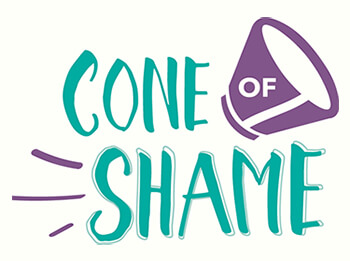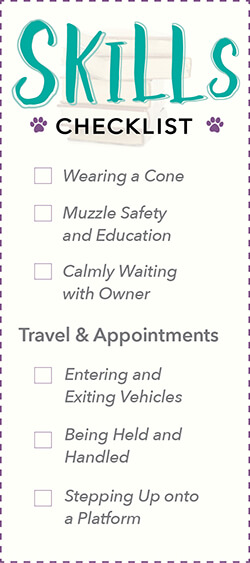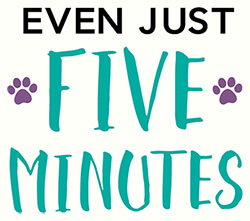
Skills Every Puppy Should Know
By Melissa Viera
Puppy classes have evolved a lot in recent years. A big part of puppy training classes is focused on healthy socialization, and providing puppies with all kinds of real life experiences. Puppy class should help prepare young puppies for a lifetime of success. Pet owners seek and trust the advice they get from professionals in the pet care field whether they are veterinarians, groomers, daycare or boarding professionals. Whether your facility provides training services or not, you can still be a part of the conversation when it comes to raising puppies right. You might even decide to host special workshops occasionally to further guide new puppy owners.
Most new puppy owners understand that their puppy should learn some basic skills. Learning to go potty outside and learning not to nip are the most common things puppy parents need to address with their young one immediately. Obedience skills are also a priority, but there are a whole set of other skills that can easily be overlooked with such busy training schedules. Preparing puppies for life means providing them with positive exposure to a wide range of experiences. There are a lot of things that puppies will likely encounter in life including going to the groomer’s, having their nails trimmed, riding in the car, taking medicine, and even wearing cones and muzzles. If puppies have good experiences with these things now, they will be less likely to have a problem with them later on, making everyone’s job easier.

Cone of Shame
Cones and muzzles are not every day items, but at some point just about every dog will have to wear a cone and possibly even a muzzle. After getting spayed and neutered, a cone is used to prevent dogs from getting at their stitches. The cone has been affectionately labeled in the dog community as the “cone of shame.” Cones aren’t just used after surgery. Even a minor bug bite or skin allergy might require the use of a cone to prevent licking. Wearing a cone does not have to be an uncomfortable thing, and it certainly does not have to be shameful. If puppies learn that wearing a cone is a positive experience before there is ever a need for one, then it will be no big deal when it comes time to use one. After all, if they are just coming out of surgery, why give dogs something else new and unfamiliar to have to deal with?
An entire puppy class can be dedicated to playing “dress up,” and showing owners how to get their puppies comfortable with the various things they might have to wear. With the cone on the floor, puppies can learn to put their head in on their own to earn a reward. They can also practice wearing the cone for brief periods which should be highly reinforcing for them. If your daycare staff is looking for a new activity to do with the dogs during daycare, they can do these same exercises. Any dog of any age can practice these exercises.
Muzzles
Muzzles are another item that dogs might have to wear. Even the friendliest of dogs could potentially bite if they are injured or have to undergo a procedure that they are not comfortable with. For this reason, dogs can be muzzle trained and owners should be educated on how to safely use a muzzle. Muzzles might look intimidating to us, but that is just our human way of thinking. To a dog, a muzzle does not have to be a negative thing. A properly fitted basket muzzle prevents biting, but allows the dog to pant and even eat. To train dogs to wear the muzzle, a bit of food can be smeared on the inside of it to teach them to put their nose in on their own. A dog that has to be muzzled at the groomer’s or the vet’s is already stressed. In an ideal world, they would recognize the muzzle and politely wear it without becoming even more anxious.
Along with introducing muzzles into training programs for dogs, it is equally important to openly talk about them with pet owners. If everyone is playing the “muzzle training game” they won’t be so scary, and it won’t be as offensive if a dog has to be muzzled for a procedure at the vet’s or groomer’s. Muzzle safety and education is an important part of being a responsible pet owner. Pet owners should understand why and how muzzles are used (never unsupervised and never for an extended period of time).

Car Rides
Along with wearing various items, puppies should learn about other things they will encounter in life. A trip to the veterinarian can be a positive experience from start to finish with some training. Before walking in the front door of the vet’s office, or anywhere, puppies must take a ride in the car. If you ask your clients, you might find that more of them have issues with the car than you would have thought. Again, any dog of any age can practice these exercises. Some dogs are very excited about riding in the car while others are anxious.
Practicing entering and exiting the vehicle politely along with having calm trips to various places will help. Every puppy and dog should learn to wait when their owner opens the door of the car until they are released, or given a cue to exit the car. This is important to talk about with clients because it will help prevent any accidents when clients take their dogs to your facility or anywhere.
Trips to the Vet
In the waiting room of the vet’s office, puppies should be trained how to be on their best behavior and owners can be educated about keeping their pets safe with shadow blocking techniques (keeping the pet between them and a wall at all times so other dogs can not surprisingly run up on them). Puppies should also practice resting calmly next to their owner while they wait their turn. Usually getting weighed is the first thing that happens during a visit, so puppies can be trained to step up onto a platform and wait there to practice for the scale. Other things to practice are; being held for blood draws by strangers, being gently restrained as they would be for shots, being handled all over, and even taking medication (your vet can demonstrate different ways of administering medication which can be practiced with treats). Similar skills, along with additional ones will be useful for grooming. Puppies can be stacked on a grooming table and experience different ways their groomer will hold and handle them along with different sounds of the grooming salon.

Even just five minutes practicing these skills a few times a week can make a difference for puppies. If you work with puppies, these are all things you can do, and encourage the owners to practice. Adult dogs will benefit from practicing these skills as well. During daycare your staff can play training games with the dogs involving these skills that will not only be beneficial for the dogs, but also give the dogs mental exercise while they are at your facility. If you don’t provide training classes, a workshop held even just once or twice a year is a good way to educate owners, and gain new clients with a marketing opportunity that stands out.
Setting puppies up for a lifetime of success, and helping to condition dogs to real life experiences, is the purpose of training skills like these. There are many skills that can be incorporated into training, and based on who your clients are, you know what skills are most important for them. When you look at training as a part of life and not so much as something we do to dogs, you can see beyond obedience, and find a whole new world of areas we can improve on by looking at them from a training perspective.


